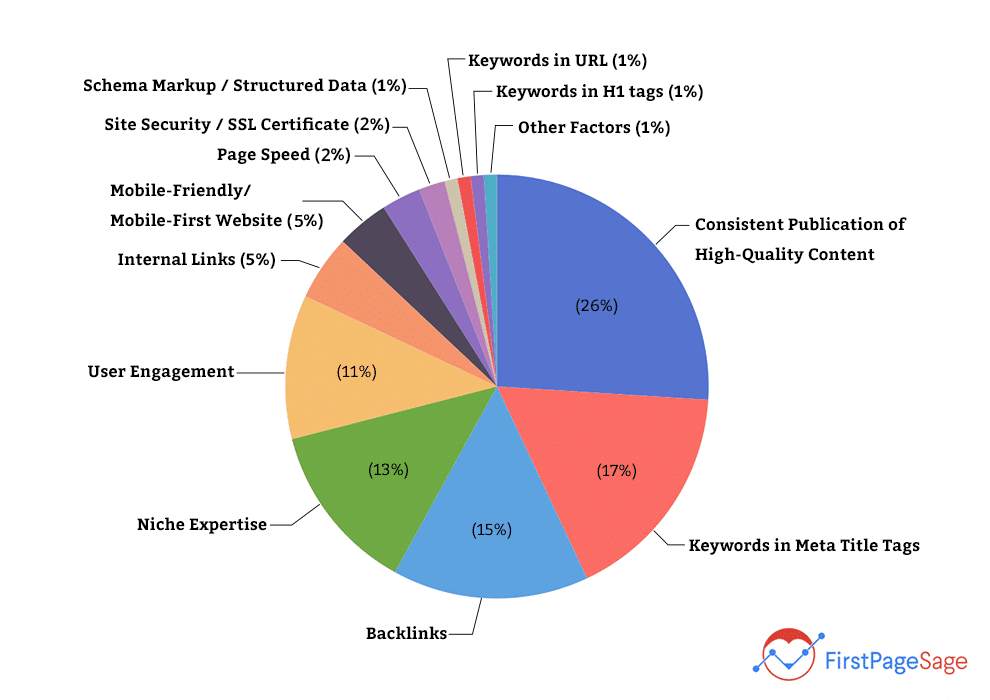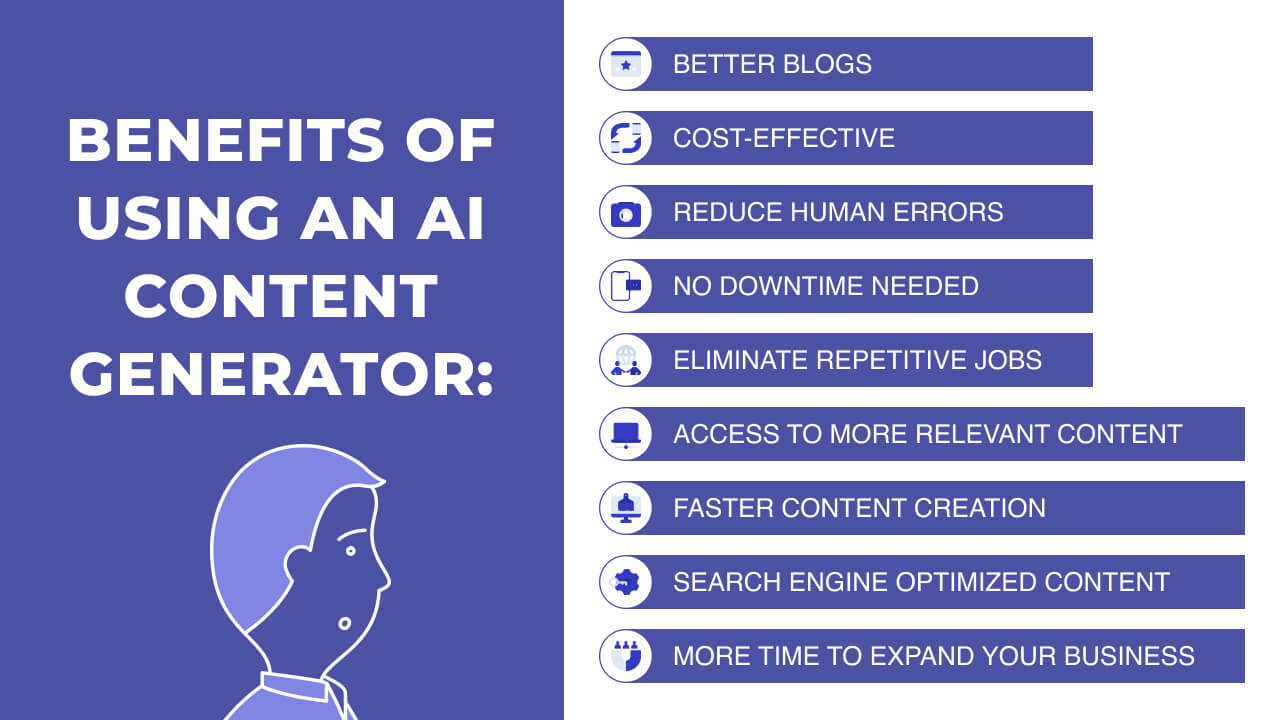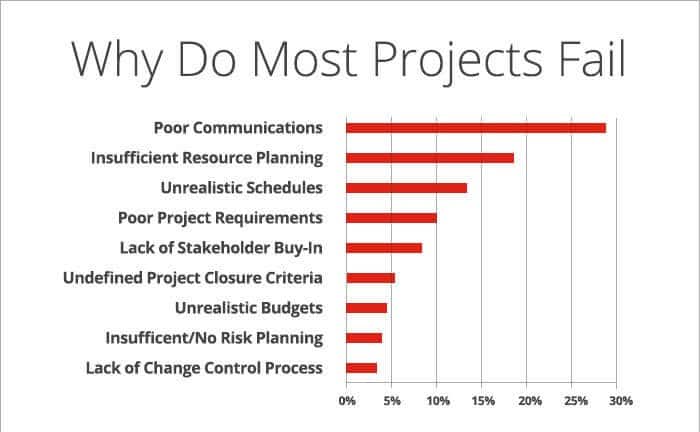
To help you create and scale high-quality content for your clients, we asked nine digital marketing professionals and agency owners to share their own content creation strategies.
Why? In 2022, 63% of businesses say the number one reason for their lack of content marketing are content creation challenges (ideas), with 51% listing ‘strategy issues’ (delivery, execution) as their top challenge.
As marketing matchmakers, clients consistently tell us content marketing is one of their biggest challenges. Not only because of the time it takes to research and create quality content, but how to measure the ROI of their current strategy, and how to streamline the process.
Solving these problems starts with one question:
“How do you scale high-quality, engaging content?”
From delegating tasks to market research and project management, and leveraging Facebook groups to build community – here are the top content scaling techniques to weave into your own digital strategy:
Table of Contents
Blend New & Repurposed Content
1. Be Proactive, Do Your Research & Plan Ahead
Pro Tip: Sydney Fuhrman, Conklin Media
“No matter what type of content you’re creating, a scalable approach requires the right amount of research, planning, and foresight.
Creating a content calendar is one way to go about it, but you can also generate a list of ideas to circle back to if you want more flexibility.
Set your team up for success by researching relevant keywords for customer avatars, and organize them based on the different stages of the funnel to keep things in order.
Having a reserve of highly-relevant, high-volume terms and topics on hand will save you time and position you for success – even when you need to supplement your initial research along the way.“
A proactive plan beats a reactive plan, every time. That’s the power of schedules, deep subject matter research, and wielding an ever-growing list of interesting ideas.
Here are five content schedulers & curators to help streamline the process:
- Sprout Social
- CoSchedule
- Feedly
- ContentCal
- Buffer (Used in our marketing stack here at Credo.)
Content ideas can come and go in an instant. Some may not be any good, others might be gems. Hold onto them.
Keep a trailing note on your phone, use the tools above, use sticky notes, and napkins at restaurants; whatever you have to do to hold onto those ideas.
That keeps your ideas flowing, your team engaged (allows others to contribute to the list), and offers no shortage of ideas for your copywriter, marketing manager, or yourself.
This list is a treasure trove of ideas for whoever creates your content.
Bake in a list of relevant keywords for your customer personas, your USPs (unique selling propositions), and relevant SEO. Check-off these tasks and you’ve streamlined one of the most time-consuming parts of content creation.
2. Repurpose & Refresh Your Existing Content
Pro Tip: Matt Jackson, SEO consultant
“When looking at scaling quality content for clients I first look at what they already have.
Existing relevant and up-to-date content should never be ignored.
Reaching out to experts and adding new quotes brings older articles back to life. My team and I also use old content as the foundation for video and infographics. When scaling, you need to consider time, of which ideation takes a big part.
If the idea is already published and relevant, repurposing content is a fast and clever way to scale high-quality content.“
Creation, in almost all forms, takes time. If you run a blog, public relations, or social media channels for your clients or your own business, you know that is a serious time commitment.
Why not reuse all that fantastic information? Repurposing or refreshing content may sound simple or as if Google might penalize websites that do anything close to copying and pasting content. But as long as you don’t copy and paste content from one domain to another, this strategy saves time and lets you double down your best content.
In fact, that’s not the case at all. Google has no duplicate content policy–and even if it did, you aren’t duplicating content. You are refreshing posts, pages, and digital collateral to keep your audience engaged.
Just consider Eugune Cheng, who roped in 10,000 new blog subscribers simply repurposing blog posts into Slideshare presentations. He refreshed the presentation at different points in virality, highlighting the power of a quick refresh.
The updates were mostly cosmetic, such as a new featured image. Small changes, especially to aesthetics, catch eyes.
It “gives your content a new lease on life,” as Cheng aptly notes. The best approach is to scan your content stack for the content with the most traffic. Your audience has shown a clear interest in that piece so try this:
Log into Google Analytics (GA) and follow Behavior >> Site Content >> All Pages.

From there, you can sort the pages by Pageviews. Boom! You have a full list of the most popular pages on your website.
Here’s a peek at Credo’s most viewed pages from Aug 2021 – Aug 2022, for example:

You can also set time-based or comparative parameters from this page i.e. most viewed pages in 2021 or views from Jan 2020– Dec 2020 compared to Jan 2021– Dec 2021 on a specific page.
Here are traffic changes over the last year to Credo’s top landing pages:

This displays what content rose in rankings, fell off in views, and more.
3. Interview a Subject Matter Expert (SME) for a Blog Post
Pro Tip: Eric Doty, Butter
“To scale content creation without sacrificing quality, interview a subject matter expert for each article.
By sitting down for a half-hour interview with a subject matter expert on the client’s side, you can get enough content inspiration to fill an entire 2,000-word article.
Taking thirty minutes to talk to an expert will cut your research time by hours and significantly cut down on how long it takes to write your article.
Not only does this give you expert insights you won’t find on Google, but it also lets you use the client’s own voice and perspective, which benefits the reader and is more likely to impress your client.”
Eric nailed this one. To piggy-pack, there are more ways to maximize this strategy.
Not only does interviewing an SME allow you to streamline your research process, but you also create an authoritative voice for your client.
Establishing your client as a thought leader in their industry provides true value.
This can lead to:
- Guest post opportunities;
- Podcast interviews;
- Co-branding partnerships with other strong voices in the space;
- Robust backlinks for an SEO boost;
- Growing your client’s social channels.
That’s a lot of perks.
While the interview process is generally shorter than research for a 2,000-word long-form blog post, your interview process will get more precise, efficient, and effective over time.
The interview still requires research, if you want to tap into your client’s or SME’s deep knowledge.
Keep in mind that just because a question seems original or interesting to you does not mean much. You are writing or creating something for an expert.
Coschedule offers an excellent framework to use for your own interview process.

If your client sells the newest field technology for crop monitoring and optimization, chances are the audience is highly specific and adept in baseline industry knowledge.
Provide content of real value, and actionable knowledge, to a niche audience. There’s true brand value there.
It’s no easy task but worth its weight in gold.
Delegate Time-Consuming Tasks
4. Assign Specific Tasks to a Team of Four People
You need a team of four people: a researcher, an outline creator, a writer, and an editor.
The researcher will be responsible for identifying the information you need to include in your piece. They will do all the heavy lifting of finding facts and statistics to include.
An outline creator will turn it into an outline covering all of your piece’s main points and create a skeleton of the content. This person needs to understand how readers’ minds work and how best to present information so that it’s engaging and coherent. Then the writer will turn it into an actual article that’s easy to read and interesting. Finally, the editor will ensure that there are no gaps or contradictions in your work. Also, he’ll check for grammar errors and edit anything unclear.
The key here is that each of these people has specialized skills that complement one another well, which speeds up the whole process.
Shaun Connell, Connell Media
If you have the bandwidth, this is how you bulletproof your content strategy. Instead of one set of eyes on a blog post, infographic, or other pieces of content, you have four.
Most businesses will not have the budget for such a content-focused team. If you can, your brand will flourish.
Writing is about 20 percent writing, and 80% of all of the other tasks listed by Shaun. Your content will be full of research and useful outbound links and exceptionally polished. These are some of Google’s favorite things.
They say it takes an army to raise a child–the same goes for your content strategy. Not only does this ensure your content is engaging, well-researched, and SEO friendly, but your content team will flourish.
Every team member contributes what they are best at doing. Content creation becomes a lot easier and flows in much higher volume when everyone is contributing to a shared goal or KPI.
5. Scale Content Creation with A.I.
If you have spent any time on marketing TikTok, you’ve probably seen countless content writers lauding tech like Copy.ai for scaling up content creation.
In my experience, tools like these can be great for generating headlines and ideas, which can save you valuable time. The caveat of course is that the technology isn’t perfect. I recommend these tools for idea generation, but not for the content creation itself.
You are still allowing yourself more time to flesh out the content by saving time in the brainstorming phase, but AI doesn’t yet replace the charm, creativity, and brand cohesion necessary for great content.
Grey Idol, altLINE Sobanco
You can leverage AI to save time on your content creation. In most ways, Grey’s strategy here is the antithesis of Shaun’s strategy above.
With one writer or editor to manage and oversee the AI content creation process, you can put out professional, engaging, SEO-friendly content–and with a quarter of the staff.
The amount of AI tools to create content is growing at an exponential rate. With so many new entrants, you need to take time to research and vet the tools you use.
Here’s a list of nine fantastic AI content tools to consider.
Build A Community Around Your Brand
6. Leverage Facebook Groups to Find Subject Matter Experts
One way we’ve scaled high-quality content for clients is [by] leveraging Facebook groups to find subject matter experts. Here’s why.
In my experience, the toughest part of signing a new content marketing client is finding true subject matter experts in the client’s niche—either to write content or simply to be interviewed for a piece. Facebook groups solve this problem because they’re full of enthusiasts in any given niche.
If you sign a new client in the auto repair niche, for example, you can likely find multiple writers who happen to love auto repair in a public Facebook group with 500K+ members. (Note: many groups have rules for letting you post jobs, or will allow this if you DM a group admin first.)
The bottom line: it’s easier to have an editor clean up the writing of a true expert than it is to give a writer all of the research they’d need to write expertly on a new, obscure topic. Use online groups to your advantage.
Zach Grove, Growth Marketer and Advisor
Frustratingly, there is no trusted, master list of subject matter experts (SME) on any one topic. Finding a true expert on a subject can be difficult, especially in something like an auto repair niche, as Zach mentions.
Joining Facebook Groups focused on the topic you need to create content provides a fount of knowledge. Not only will you familiarize yourself with top industry topics, concerns, and parlance, but an entire community of dedicated zealots to that topic.
Subreddits or Quora (check out our founder’s page) questions are another excellent place to search for SMEs. HARO (help out a reporter) and similar resources are also excellent for tracking down SMEs.
To take Zach’s point one step further, Facebook Groups are a wildly underrated way to build a community around your brand.
Take an up-and-coming travel company that offers set group backpacking tours around the world, for instance.
The travel industry is incredibly competitive and standing out can be a challenge. Building a community around the brand helps in several ways–beyond just increased brand awareness–including:
- Improved, direct engagement (with group moderators representing the brand);
- Brand ambassadors can lead discussions and help answer questions;
- Personalized experience (members can put a name to a real face for the brand);
- Promote specific content outside of Facebook (keep any hard sells to a minimum);
- Social proof by allowing former customers to interact with potential customers;
- Bring up and discuss current events around the travel industry or specific tour locations;
- Generate authentic conversations and connections around travel (and the brand);
- Bypasses the News Feed, offering direct communication with the group.
Project Management Is a Must
7. Use an Effective Project Management Tool
Find a project management (PM) tool, preferably a cloud-based tool so that it can be shared, that works for you and the type of projects you’ll mainly be working on.
Use this tool to manage as many of your client projects as possible, so that there’s predictability, continuity, and consistency in your content output.
Using a project management tool makes it possible to automate some elements of your workflow in addition to managing it all in one place, which allows you to scale content creation as a whole.
Dan Barrett, Adwords Nerds
There is great value in automating elements of your content workflow in a centralized location. All collaborators and stakeholders can contribute to a pre-determined hierarchy of tasks for efficient and effective completion.
You can set out OKRs and KPIs for the next month, quarter, or year within your PM tool. Such tools provide a birds’ eye view of your brand, which keeps projects and people on task by keeping everyone accountable to one another.
With the top project management tools, time-sensitive tasks get the attention required and there is no need to helicopter manage your team checking that deadlines are met. You are in control of deadline dates and priority levels. It is easy to set alerts to ensure key team members (or everyone) know when deadlines are approaching.
As charted, collaborative and communication tools are invaluable. Managing projects through Facebook Workplace Groups or What’s App is certainly an option, but take caution in overlapping work and personal communication lines. There’s a reason we have our work email and personal email separated. The same goes for PM tools.
There are dozens of “best” project management tools out there. Some work better for managing content creation than others. From experience, your PM-of-choice depends on your specific needs. You may need robust forecasting or reporting tools, kanban board-style project management, or maybe mostly for centralized communication.
Here is a list of industry leaders in project management software:
Some of these options, like Trello, double as customer relationship management (CRM) tools. Again, which tool you use and how you wield that tool depends on your company’s specific needs–content creation included.
Each of the options listed has a free trial period or a free-tier option to test before committing to one tool. Don’t rush this decision. The right PM tool becomes an extension of your business model and business strategy.
8. Always Strategize Before You Scale
We often get clients who want to begin with six+ pieces per month right from the get-go. But the fact is that this is often not advisable for a few reasons, the main one being that it takes time to understand a new client’s product, target market, and the company itself. It takes time to create a good strategy so that you don’t end up writing a lot of content with no goal.
We first start with three pieces per month, and if we think it makes sense to scale and if the client is happy for us to, then we scale. But we only do this once the strategy and relationship [have] been established.
Araminta Robertson, Mint Studios
Quality over quantity is Araminta’s main point here.
If you or a marketing director currently manage content strategy, you’re probably not pumping out six high-quality blog posts or pieces of content per month. Social media posts aside (social is still a vital part of this entire process, mostly delivery), quality content takes time.
Create content to inform, sell, and retain customers. But most importantly, create content that registers with your audience. Devote time to each piece. We are bombarded with content all day every day and the eye test is harder to pass than ever before.
Before you publish content consider what value it holds to your audience. If you can’t nail that down, better to update that content or hold onto it until the answer to that question becomes crystal clear.
Two high-quality pieces of content that garner better traffic, engagement, and backlinks (including social shares) or six pieces of aimless content with measly engagement each month–which do you prefer? You get the idea.
If you don’t have the bandwidth to do this yourself, hire a team that specializes in content marketing.
9. Put a System in Place to Assure Efficiency and High Quality
One way to scale high-quality content creation for clients as an influencer is to create a system or process that you can use for all of your clients. This system could include creating a content calendar, developing a style guide, and creating templates for different types of content.
Having a set process in place will help you ensure that all of your content is high quality and consistent across all of your client’s accounts. Additionally, having a process allows you to plan ahead so that you’re never scrambling to create content at the last minute that will just end up being subpar.
Nowadays, people can easily tell if content was thoughtfully put together or if it’s just a rushed, last-minute piece that doesn’t offer anything valuable.
To succeed as an influencer that brands trust, you need to be able to produce high-quality content consistently. That’s why it’s so important to have a system in place that you can rely on to help you create great content quickly and efficiently.
Serg Aspidoff, Shoutcart
Count this as a tl;dr for everything above. Serg doesn’t dive into the specifics but echoes the sentiment of all the other SMEs on this list when it comes to one thing: you need a clear, tangible plan for content creation.
Namely, you need a system or process in place if you don’t want your content to appear slapdash and generally unhelpful. That requires a content cadence and content plan.
Dennis Wakabayashi provides a time-tested model to truncate your strategy in order to serve up engaging content that is best suited for leads at various stages of your sales funnel.
Need to Scale Quality Content Production?
If you’re looking to scale content for your brand, you probably need to work with a great content marketing agency. Here at Credo, we work with more than 70 pre-vetted content agencies.
Schedule a marketing evaluation with our team today to get introduced to the right ones for your brand and needs.
Terkel creates community-driven content featuring expert insights.
Sign up at terkel.io to answer questions and get published.





